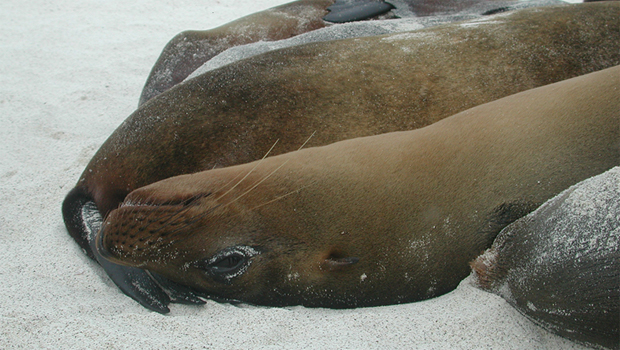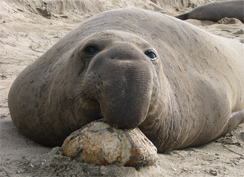Nature up close: Elephant seals
By contributing "Sunday Morning" nature videographer Judy Lehmberg:
If you were dropped onto our Earth and saw giraffes, rhinos, porcupines and elephant seals for the first time, would you think, "Who dreamed those up?" As a biologist who understands evolution, I still have trouble explaining some organisms to myself. Think about an anteater: They are really well-adapted for what they do, but they look absolutely absurd.
The evidence that elephant seals, like other seals and sea lions, evolved from land animals is fairly well-established. If you compare the bones of an elephant seal to a bear (to whom they are believed to be most closely-related), you would find many similarities -- they both have an upper arm (the humerus), a forearm (the radius and ulna), wrist bones (metacarpals), hand bones (carpels), and fingers (phalanges.)
Northern elephant seals (Mirounga angustirostris) are considered to be true, or earless, seals. True seals do not have strong front flippers, so they can't sit up and they have no external ears -- the flap of skin and cartilage present in most mammals. They also are more streamlined and have a thick layer of blubber under their skin.
Eared seals, such as the Galapagos fur seal, have ear flaps, larger front flippers, and, as their name implies, fur. They spend more time on land than the earless seals.
The male Elephant seal really earns his species' suggestive name, thanks to his size (they weigh about 3,000 pounds) and enlarged nose area (the proboscis), which they use to make really loud roaring sounds to establish and maintain their breeding territories. On land their movement resembles an undulating, fat sausage. They don't have a graceful bone in their body, yet they are superbly adapted for what they do.
And what they do is: dive, eat, mate, have babies, repeat.
They only eat in the ocean, usually diving deep (up to almost 6,000 feet), staying below water for as long as two hours to capture their prey, including fish, squid, octopus and crabs. Their adaptations for diving are numerous. While they are on land, their heart beats up to 110 beats per minute, they breathe about 18 times per minute, and their blood circulates all around their body, including their skin.
As they begin a dive, they exhale most of the air in their lungs, stop breathing, change their circulation so blood does not go to the skin, and their heart rate slows to as little as 3 beats per minute. They have more red blood cells in their blood and more myoglobin in their muscles, so they can store more oxygen than most animals.
Although they spend about 80% of their time in the ocean they must come onto land to molt, have their pups, and mate. During that time they eat and drink nothing for up to two months.
The males come to the breeding colony first to begin establishing their territories, followed in a few weeks by the females, who usually give birth within a few days. After nursing their pups for several weeks, the females come into estrus, mate, and return to the ocean. Their pups continue to spend most of their time on land for another month or two while taking short forays into the ocean to learn to swim. They do not eat during that time.
For more on the San Simeon elephant seals:
Judy Lehmberg is a former college biology teacher who now shoots nature videos.
For more info:
- Judy Lehmberg (Official site)
- Judy Lehmberg's YouTube Channel
To watch extended "Sunday Morning" Nature videos click here!

